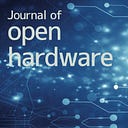Open Hardware Distribution and Documentation working group: Creating a network

This is the 11th post of the series of the Open Hardware Distribution and Documentation Working Group (which we’ve shortened to “DistDoc”). The group aims to produce a proof of concept for distributed open science hardware (OScH) manufacturing, exploring key aspects like quality, documentation, business models and more using as a starting point a paradigmatic case study. We hope the experience motivates others to discuss and implement new strategies for OScH expansion.
By Brianna Johns
Our last post delved into various approaches to branding distributed open hardware products, referencing four organizational options for Open Flexure (OF) created by working group member Michael. Here are the four options again, in order of most to least centralized:
- A single public brand: Distribute OpenFlexure under the OpenFlexure brand, manufacturing partners are not visible to end users
- LocalBrand, an OpenFlexure Device: Manufacturing partners brand their own version of OF and license “an OpenFlexure Device” from OF central
- Quality mark: Manufacturing partners brand their own version of OF, while a single quality mark guarantees that OF devices with the mark meet minimum standards.
- OF-compatible: Manufacturing partners brand their own version of OF, and are able to claim that their version is ‘compatible with OpenFlexure’ to help people understand how the device can be used.
These options sparked conversations regarding marketing and branding, raising an important question: who does what within these organizational structures?
Addressing roles and responsibilities
Here lies a labor problem. Each of these options needs someone responsible for research, design, manufacturing, or marketing, whether they are from the central organization or a manufacturing partner. The most centralized organizational structure requires OF to do all the work, while the less centralized ones disperse more work to the manufacturing partners. Some of these roles, such as design and manufacturing (the manufacturing partner will carry out manufacturing), are clear-cut, but things like marketing become a little more nuanced. How do we distribute roles and responsibilities across manufacturing partners while maintaining a decentralized administrative structure? Viewing these roles and responsibilities within the framework of a network is one way to address this.
The group acknowledged that an administrative structure that supports networks is key, and what’s next is understanding who is responsible for each piece in the network. However, we are once again faced with the problem of who is responsible for what piece. Group members are here for different reasons, some are interested in design, some are interested in marketing, and others are interested in manufacturing. How do we allocate responsibilities when there are gaps, but no one has the additional capacity or ability to fill that particular space? Mapping out who can contribute resources now, and what potential resources might be, is the first step in addressing this. The next would be understanding where needs are and outlining responsibilities and expectations.
Collective network agreements
“What do I need to give to you, for you to give me what I need from this role” is how one group member put it. For this network to function effectively, agreements need to be made between developers and manufacturers to fill roles and establish responsibilities. There are relationships and flows between each role, and a collective agreement between stakeholders can provide a structure that puts all the pieces together.
Centralization to address administrative tasks
The importance of a network remains regardless of how centralized or decentralized the organization is, but the technical realities of things like payments do require a partially centralized administrative structure. Keeping track of finances, contractual obligations, and marketing are technicalities that need to be addressed. Forming a cooperative was one idea of how to meet those needs while maintaining a network that is not too centralized.
The group will begin exploring cooperative governance structures for OF in upcoming meetings, so be on the lookout for some interesting blog posts on this in the future!
